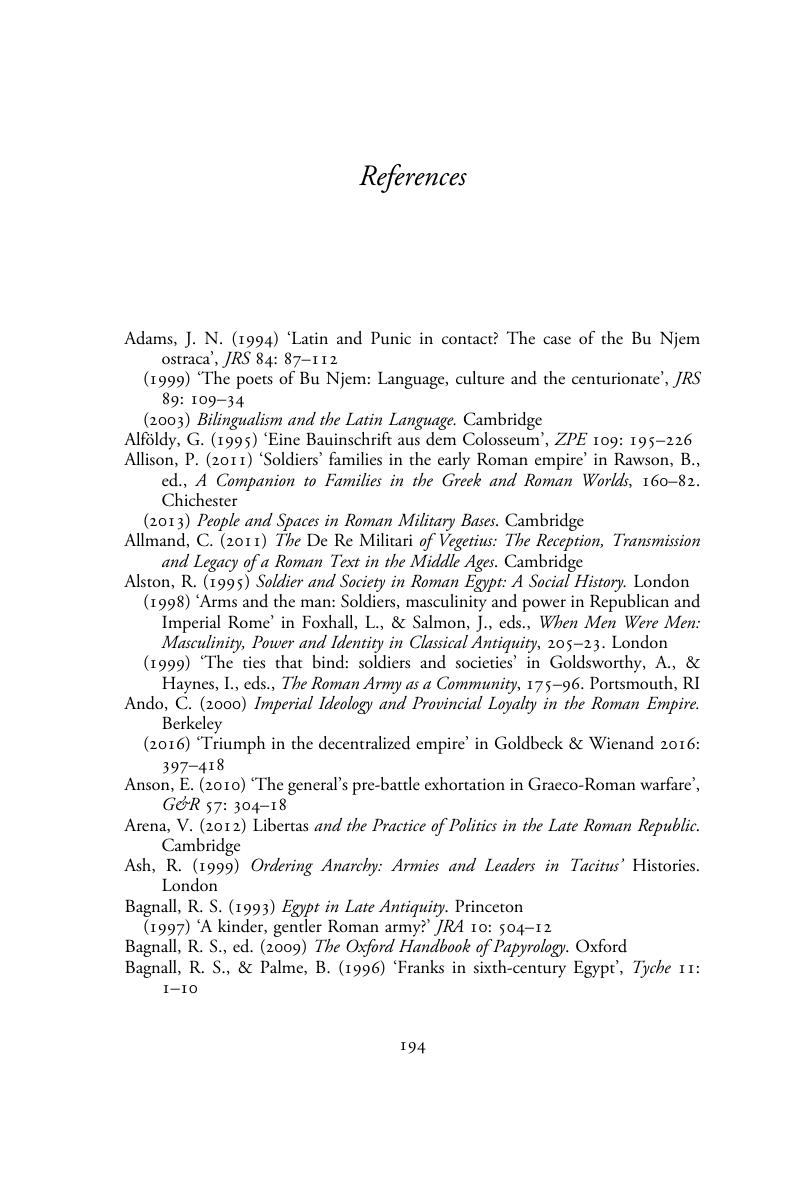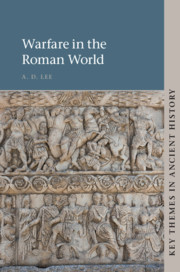Book contents
- Warfare in the Roman World
- Key Themes in Ancient History
- Warfare in the Roman World
- Copyright page
- Dedication
- Contents
- Maps and Illustrations
- Abbreviations
- Preface
- Maps
- Introduction
- Chapter 1 War and Peace
- Chapter 2 Military Service and Courage
- Chapter 3 Manpower and Money
- Chapter 4 Authority and Allegiances
- Chapter 5 Society and Identity
- Chapter 6 Culture and Communication
- Chapter 7 Experiences of War
- Epilogue
- Bibliographical Essay
- Table of Significant Events
- Roman Emperors
- Glossary
- References
- Index
- References
References
Published online by Cambridge University Press: 04 September 2020
- Warfare in the Roman World
- Key Themes in Ancient History
- Warfare in the Roman World
- Copyright page
- Dedication
- Contents
- Maps and Illustrations
- Abbreviations
- Preface
- Maps
- Introduction
- Chapter 1 War and Peace
- Chapter 2 Military Service and Courage
- Chapter 3 Manpower and Money
- Chapter 4 Authority and Allegiances
- Chapter 5 Society and Identity
- Chapter 6 Culture and Communication
- Chapter 7 Experiences of War
- Epilogue
- Bibliographical Essay
- Table of Significant Events
- Roman Emperors
- Glossary
- References
- Index
- References
Summary

- Type
- Chapter
- Information
- Warfare in the Roman World , pp. 194 - 217Publisher: Cambridge University PressPrint publication year: 2020



